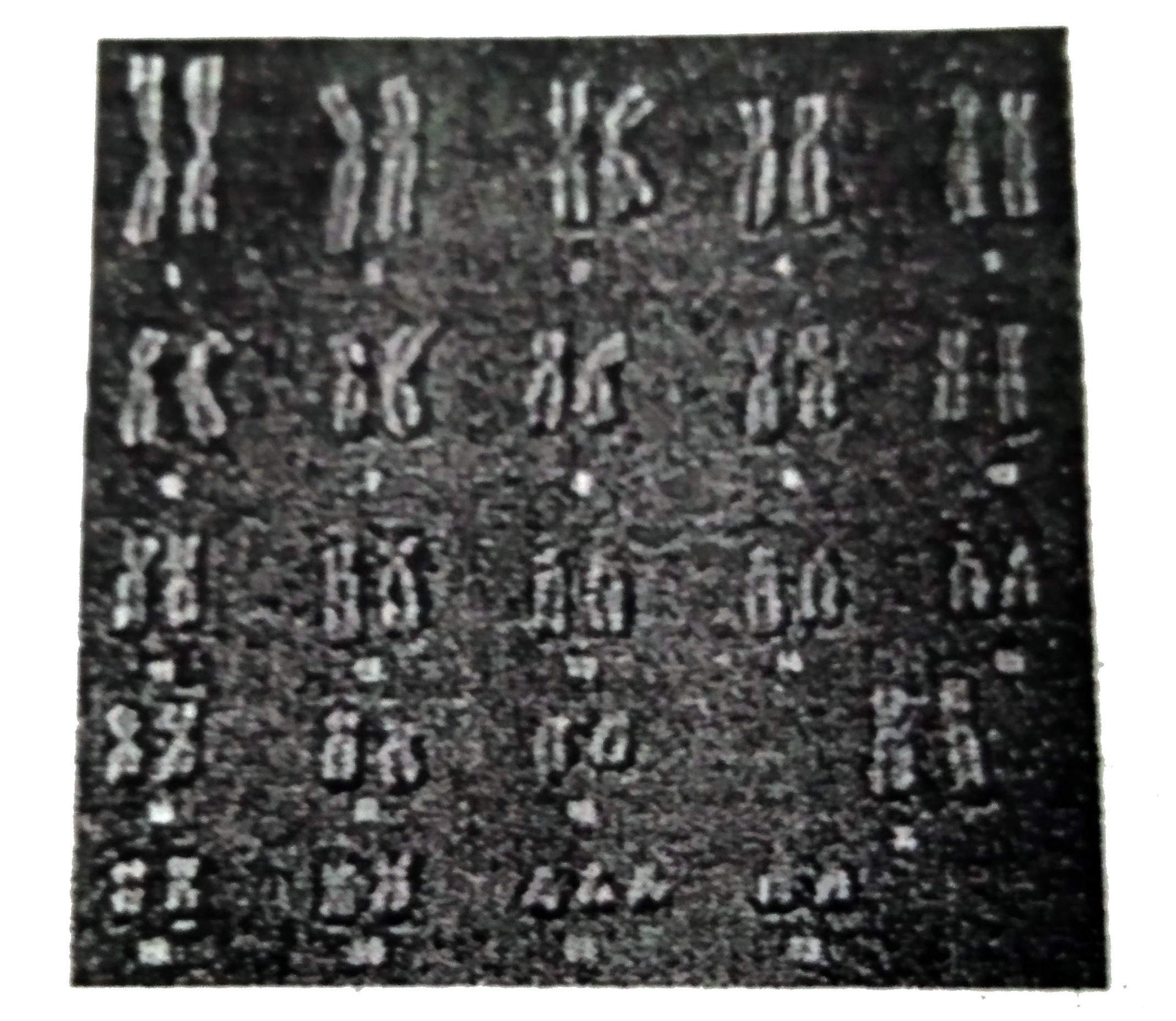What is Karyotyping?
Step-by-Step Text Solution for the Question "What is Karyotyping?"
1. Definition of Karyotyping: Karyotyping is a laboratory process used to determine the chromosome complement of an organism. It involves analyzing the total number of chromosomes and their characteristics in an individual.
2. Purpose of Karyotyping: The primary purpose of karyotyping is to identify any abnormalities in the chromosome structure or number, which can lead to genetic disorders. It helps in diagnosing conditions like Down syndrome and Turner syndrome.
3. Methodology:
- Sample Collection: The process begins with the collection of a sample, typically blood or tissue, from the individual.
- Cell Culture: The collected cells are cultured to increase the number of cells available for analysis.
- Chromosome Preparation: The cells are treated with a solution that halts cell division at metaphase, where chromosomes are most visible.
- Staining: The chromosomes are stained to enhance visibility under a microscope.
- Microscopic Observation: The stained chromosomes are observed under a light microscope, and images are taken for analysis.
4. Analysis of Chromosomes:
- Photographs: Specific photographs of the chromosomes are taken from different angles and sections.
- Characteristics Studied: The analysis includes studying various characteristics such as:
- Size of the chromosomes
- Position of the centromere (the central part of the chromosome)
- Relative and absolute sizes of chromosomes
- Number of chromosomes (normal somatic cells should have 22 pairs plus one pair of sex chromosomes)
- Presence of satellite chromosomes (small segments attached to chromosomes)
5. Identification of Abnormalities: By comparing the observed characteristics with normal chromosome patterns, any abnormalities can be identified. This can include extra chromosomes, missing chromosomes, or structural changes, which may indicate genetic disorders.
6. Clinical Significance: Karyotyping is crucial for prenatal diagnosis and can help in planning for potential genetic disorders, allowing for early intervention.
- Sample Collection: The process begins with the collection of a sample, typically blood or tissue, from the individual.
- Cell Culture: The collected cells are cultured to increase the number of cells available for analysis.
- Chromosome Preparation: The cells are treated with a solution that halts cell division at metaphase, where chromosomes are most visible.
- Staining: The chromosomes are stained to enhance visibility under a microscope.
- Microscopic Observation: The stained chromosomes are observed under a light microscope, and images are taken for analysis.
- Photographs: Specific photographs of the chromosomes are taken from different angles and sections.
- Characteristics Studied: The analysis includes studying various characteristics such as:
- Size of the chromosomes
- Position of the centromere (the central part of the chromosome)
- Relative and absolute sizes of chromosomes
- Number of chromosomes (normal somatic cells should have 22 pairs plus one pair of sex chromosomes)
- Presence of satellite chromosomes (small segments attached to chromosomes)
Topper's Solved these Questions
- CELL CYCLE AND CELL DIVISION Book:ICSEChapter:CELL CYCLE AND CELL DIVISION Exercise:REVIEW QUESTIONS (LONG ANSWER TYPE QUESTIONS)
Explore 8 Videos
- CELL CYCLE AND CELL DIVISION Book:ICSEChapter:CELL CYCLE AND CELL DIVISION Exercise:REVIEW QUESTIONS ( LOOK AT THE FIGURE BELOW)
Explore 2 Videos
- CELL CYCLE AND CELL DIVISION Book:ICSEChapter:CELL CYCLE AND CELL DIVISION Exercise:REVIEW QUESTIONS (DIFFERENTIATE BETWEEN THE FOLLOWING)
Explore 25 Videos
- CELL : THE UNIT OF LIFE Book:ICSEChapter:CELL : THE UNIT OF LIFE Exercise:Differentiate Between
Explore 18 Videos
- CELLULAR RESPIRATION IN PLANTS Book:ICSEChapter:CELLULAR RESPIRATION IN PLANTS Exercise:REVIEW QUESTIONS ( LONG ANSWER TYPE QUESTIONS)
Explore 15 Videos
Similar Questions
What is a karyotype?
View SolutionKaryotype is
View SolutionWhat "is the importance of karyotyping?
View SolutionAssertion : Foetal disorders can be diagnosed by chrionic villi sampling .
Reason : Karyotyping cells be done by mitotically dividing cells of chrionic villi
View SolutionWhich of the following conditions could be detected by karyotyping the cells: Klinefelter syndrome, Haemophilia, Amoebiasis?
View SolutionHow many disease can be identified by karyotyping?
Klinefelters syndrome, phenylketonuria, Thalassemia, Alkaptonuria, Albinism, Colour blindness, Haemophilia, Down syndrome, Turner syndrome
View SolutionWhat is a couple? What is its action?
View SolutionWhat is inbreeding? What is the danger of inbreeding?
View SolutionWhat is inbreeding? What is the danger of inbreeding?
View SolutionWhich of the disorder is related with the Karyotype given below ?

View Solution

